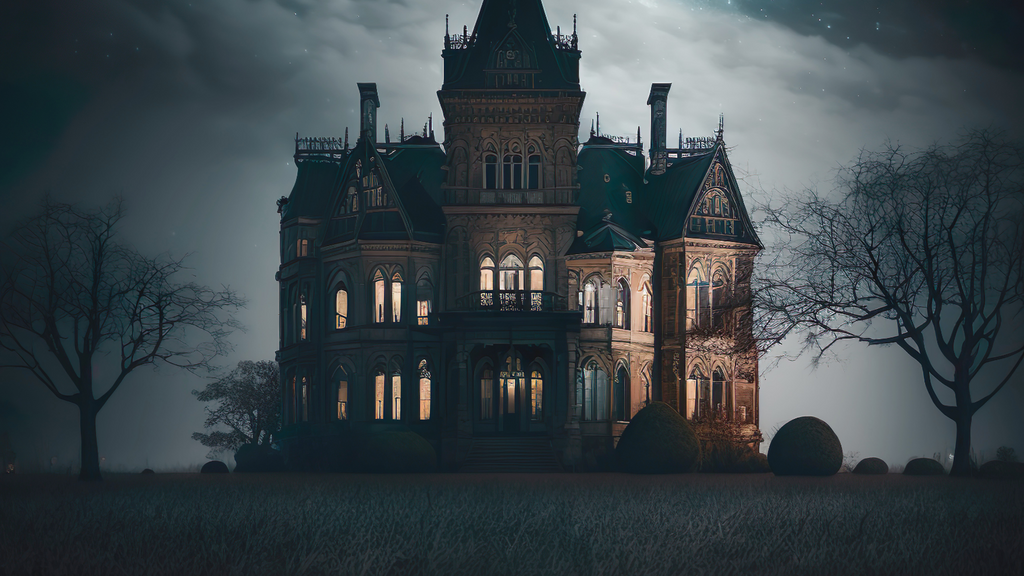It begins in a place we've all visited in our imaginations: a crumbling castle silhouetted against a stormy sky, or a fog-drenched moor where every shadow feels alive. Gothic literature doesn't just invite us in; it ensnares us. It has been doing so for centuries, from the grand halls of "Wuthering Heights" to the damp, labyrinthine passages of "Dracula's" castle. Something is enduring about its grip on us, something primal and irresistible.
Atmosphere is the first spell it casts. The mist, the flickering candlelight, the long, empty corridors where footsteps echo just a little too loudly aren't just backgrounds; they breathe and pulse with the story. The Gothic setting is a character in its own right that whispers to us, heightening our senses and making the skin at the back of our necks prickle. As readers, we don't just observe these places. We live inside them, hearts pounding, daring ourselves to venture deeper.
And why do we dare? Gothic literature offers us the rare gift of fear without real danger. Within the safety of its pages, we can stare down death, madness, and isolation. We can explore the forbidden, peek into the abyss, and confront the monstrous—whether it wears the face of Frankenstein's creature or the haunted eyes of a Poe narrator. We know we can close the book at any time, yet we never want to.
Then there’s the seduction of the supernatural. Ghosts drift through the corridors of our imaginations long after the story ends. Vampires, cursed artifacts, unholy pacts—they brush against our minds, stirring a fascination with what lies beyond the veil of the visible world. Even when authors, like Henry James in "The Turn of the Screw," leave us wondering if the spirits were ever there at all, the mere possibility is enough to ignite our wonder and fear.
But Gothic literature doesn’t thrive on cheap thrills. Its real power lies in its exploration of the human mind. Here, guilt festers and obsession rots. Here, repression twists into madness. Mr. Rochester's hidden wife in "Jane Eyre" is not just a plot device—she is the physical manifestation of guilt and secrets that cannot be buried. Hawthorne's "The Scarlet Letter" drips with shame and inner torment, each character a tangled web of sin and sorrow. Reading Gothic stories is like holding a mirror to our own concealed fears and desires.
And always, beneath the surface, there beats the tension between the past and the present. Gothic tales are often set in relics of a lost age—decaying mansions, abandoned abbeys, ancient castles—places where time has seeped into the walls. These crumbling structures reflect our own unease with progress and the sacrifices it demands. Walpole's "The Castle of Otranto" may have launched the Gothic novel, but the battle it depicts between tradition and change still resonates today. So too does Stoker's "Dracula," where the ancient evils of folklore invade the bustling modernity of Victorian London.
Maybe what is most compelling about Gothic literature is the strange alchemy it performs, blending beauty with horror. A ruined castle is grotesque, yet breathtaking. A doomed lover is tragic, and yet exquisitely romantic. Life itself is not simple, and neither are the emotions Gothic literature evokes. It acknowledges that joy and sorrow, hope and despair, often walk hand in hand.
The heart of the Gothic is mystery—not just mysteries of "who" and "what," but "why" and "how." Why does the ghost haunt? Why does the hero falter? What unseen force drives a person to madness? The Gothic reminds us that mystery is not something to be solved and discarded, but something to be embraced. It challenges us to live with uncertainty, to peer into the dark and not immediately demand an explanation.
Though its roots lie in centuries past, the Gothic thrives today. Its influence curls through our films, television shows, and video games. Brooding antiheroes, cursed towns, and psychological horror—all are direct descendants of the Gothic imagination. Creators continue to reinterpret their themes because the questions they raise are timeless. What do we fear? What haunts us? What do we long for in the darkness?
In the end, Gothic literature is a mirror—cracked and dim, but reflecting nonetheless. It shows us not just the monsters that lurk outside our doors, but the ones that slumber within. Through it, we confront the shadows and, in doing so, find a kind of strange, exhilarating illumination.
And maybe that's why we keep coming back: not just to be frightened, but to be seen. To recognise ourselves in the haunted castles, the cursed families, and the solitary wanderers. In Gothic literature, we walk bravely into the night—and discover we are not alone.
If you're feeling brave, read Barren House - a short tale for free here:
